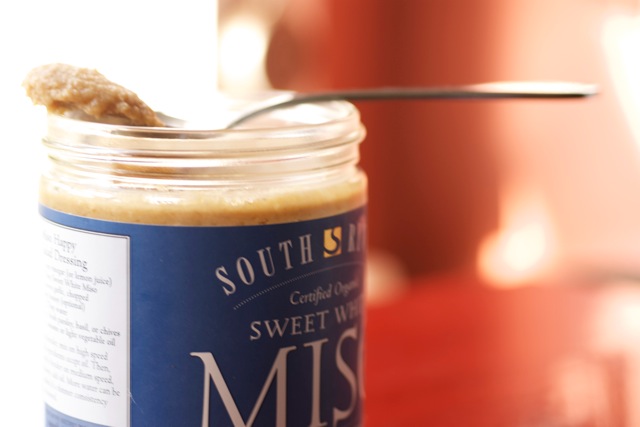
reference-image, l
(post, Cynthia Lair)
Miso-making is considered a fine craft in traditional Japanese culture, and miso itself has been a staple of Japanese cooking for 2,500 years. Miso is thought to promote long life and good health and has also been touted as neutralizing some of the negative effects of smoking, air pollution, and radiation sickness. Miso is a savory, salty soybean paste made by combining soybeans with a fermented rice culture called koji. Koji is made from a lactic-acid-producing bacteria, a grain, and Aspergillus oryzae. The soybean/koji mixture undergoes an intricate fermentation and aging process for six months to two years. I had one teacher who referred to “salty seasoning” in cooking, assuming that salt is the only choice. There are actually several things you can use to “salt” food, including tamari (a type of soy sauce), anchovy paste, ume plum vinegar (salty and sour!), fish sauce, and miso. [%image reference-image float=left width=400 caption="Miso is a savory, salty soybean paste."] When you use miso to salt a soup, you get some added bells and whistles: The fermentation process gives miso beneficial enzymes that aid digestion — like yogurt — making it a “live” food. Buy unpasteurized miso and cook it as little as possible to preserve the beneficial enzymes. Miso also adds extra dimensions of flavor. You can taste the fermented-ness, plus the soybeans and other grains used in the process. I use miso to salt some soups — like the Rosemary Red Soup on Cookus Interruptus — and in my book, Feeding the Whole Family. It’s also used in Date Pecan Bon Bons, where it adds just a nice little fermented hint to the sweet, mostly raw-foods treat. Another good thing: Miso kept stored in the refrigerator in an airtight container will keep indefinitely.

reference-image, l